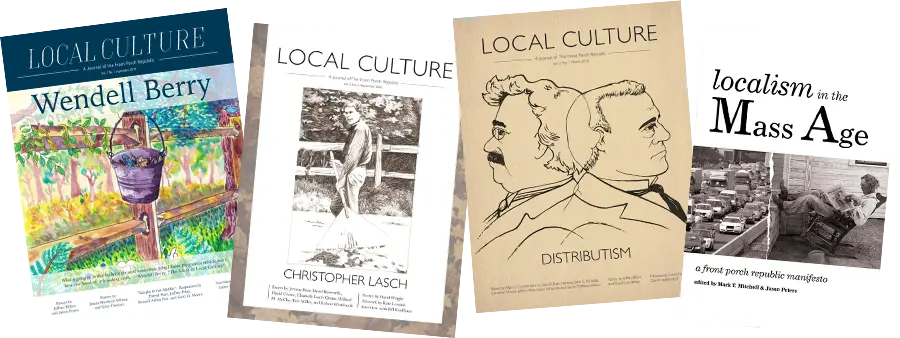A weary, hungry child is walking through the forest, the emerald-green hues of the dense foliage gleaming shyly in the rays of a young summer day. From far above, the sun’s brightness struggles to reach past the lush greenery of the crowding trees. How did she get here? Where did she spend the night that had just concluded a few hours ago? Where are her parents? We do not know. All this is beside the point anyway; we are not supposed to ask these questions.
Suddenly, she sees a little house straight ahead. Picturesque with its colorful trim, it looks welcoming, friendly, its windows open to let in the fresh air. The door is unlocked, so she walks in. The owners are nowhere in sight, but she is delighted to find a dining table set with three bowls of breakfast porridge, spoons neatly laid out next to each bowl. One bowl is too hot, the second is too cold, but the third is just right.
She eats the porridge hungrily, polishing the bowl. Tired and now also full, she looks for a place to lie down. Upstairs she finds three beds, neatly made. The head of one is too high, the foot of the other is too high, and the third is just right. Delighted, she lies down to take a nap. How do we know this is a fairy tale? Because in real life, no small child willingly just takes a nap. (I suppose real children who eat porridge are similarly rare, although others have reported encountering them.) But then the bears come home and find her, and she runs away, leaving the bears to clean up the mess and do the dishes.
A weary, hungry bear is wandering the city streets, deserted during the mid-summer heat wave. Suddenly, a most wondrous smell hits his nostrils. He knows not what it is, but he knows it is near. Unable to think of anything else at this moment, he follows his nose to a little house. The door is unlocked, so he walks in, finding himself in a small and cozy kitchen. No humans or bears are in sight, but a pot of beans is simmering on the stove with brown sugar and molasses. Of course the bear doesn’t know what this is, but he knows the most important feature of this mystery he is beholding: It is very good. Delighted, he helps himself, cautiously at first, and then with abandonment, polishing the pot with glee. The food doesn’t disappoint. Who knew such goodness existed? But then a woman enters the kitchen, screams in shock and alarm, and the bear runs away, the sweet taste of the newly familiar food still lingering pleasantly in his mouth on the warm summer night.
Indeed, reports of bears in human territory periodically appear in the news or in casual stories passed down by friends and acquaintances. A bear shyly walks into the kitchen while a man is doing the dishes after dinner. A tale of another bear, sitting calmly in the pantry with a snack when a woman walks in to discover the surprise visitor in flagrante, eating a granola bar, wrapper and all. At a conference center in the Colorado mountains this summer, I was standing with a group at one end of a courtyard before dinner when a bear casually and slowly sauntered across the courtyard’s other end, surely aware of the proximity to humans, yet feigning nonchalant insouciance.
On another occasion, a colleague’s college-aged son turned a corner one unusually warm winter day in Asheville, NC, just to see a bear sleepily shuffling along down the street. “I turned around right away,” he reported, “then told people on the next block to take another route.” A campus police report in Princeton, New Jersey, when I was a graduate student, advised the university community of a bear sighting on campus early one weekday. “Hide your honey!” friends joked.
We do not normally think of bears as commensal creatures, yet perhaps this is how they think of us. But then, it is quite the strange fascination we humans have with bears, who seem so delightfully playful and cuddly from afar. In the zoo, brown bears wrestle and roll around, stretch out in a leisurely manner on the grass, and play with the beat-up toy ball left in their enclosure. Perhaps it is no wonder that we imagine them more as soft toys than potentially dangerous giants who could snuff life out of humans with one swipe of a paw, if provoked or threatened.
Just consider this hand-knitted brown stuffed bear with a bow and a removable shirt. My sister-in-law lovingly crafted him for my then-toddler middle son. With three sewn-on buttons down his front, he resembles his folktale cousin, the Gingerbread Man. Or think of the lovable Paddington, so refined and proper with his marmalade sandwiches stowed beneath his distinctive red hat. You would never go on a family bear hunt for him, crossing grass fields and rivers and snowstorms and forests in a fairy tale land where all four seasons somehow coexist in a single day and you can still be back home for bed by nightfall.
What are bears for? Fairy tales offer an answer that seems, on the surface, simple: bears, like other animals in these tales, are for the entertainment and fruitful edification of children. True, there are plenty of humans in fairy tales and fables, but there is something charming, sweet, and enticing in the cast of animal characters who frequently populate them as well—from sly foxes and cheese-loving crows to boot-wearing scheming tomcats. Behaving anthropomorphically, the fairy tale bears yet retain at least some of their original bear nature—their love of good food and their strength and fierceness that far surpass those of humans. To put it in Platonic terms, their true bear form is undeniable and recognizable, even when distorted for the joy of the tale. Therein lies their entertainment value and their ability to encourage the child’s imagination. They are both bear-like and human-like—lovers of honey and sweets (like every small child), just a little bit menacing, yet also capable of making excellent porridge and keeping an immaculately clean home (like some, but definitely not all human adults).
Blurring fairy tale with reality, Robert McCloskey’s iconic Blueberries for Sal depicts a bear and her cub and little Sal and her mother all gathering blueberries on a scenic Maine hillside to stock up for winter. The story is a simple description of that day for both the respective offspring and their mothers. Each child—human and ursine—takes a time out during the blueberry-picking just to sit down among the bushes, rest and eat, then resume walking behind mom. What could be more typical of that age group? Except, after this pause a funny mishap happens, whereby little bear obliviously follows little Sal’s mom for a time, thinking this is his mother walking right ahead. Meanwhile little Sal follows bear’s mom for a time, similarly oblivious. The plot turns on each mother’s moment of realization of the truth and her desperate concern for her temporarily missing little one. See? The bears, big or small, are just like us, the story seems to suggest.
Encounters with bears readily become lessons in morals, virtues, values. Perhaps little Sal needs to pay attention to her mother’s instructions. And perhaps the little child in the story about the three bears should not have invaded the bears’ home so rudely. It is she who behaves more like a real-life bear in that tale. But also, perhaps all turns out well for those children who eat their porridge and take good naps. A useful moral, this! At any rate, the child is unhurt, so in the end, the tale is simply funny. Then in the hands of news reporters, kitchen-invading bears outside fairy tales recover a little of this same purpose as well. Isn’t it entertaining to read about a bear who walked into an ordinary kitchen for a snack on a summery Friday eve? Of course—so long as no one got hurt in real life, just as would be the case whenever these encounters happen in fairy tales.
But perhaps this is the wrong question for us to ask, for it isn’t for us to answer what bears are for. They are God’s creatures, not ours. He numbers their days and their purposes. And yet, in a legacy from Eden, perhaps their purpose is ours to determine in small part as well, and fairy tales help in this task. Didn’t God give Adam the task of stewarding all creatures in the garden? Don’t we hold responsibility for this weighty work still?
Hiking with my husband in Tennessee years ago, we saw a sign warning visitors: “please do not feed the bears.” It seemed a forest fit for bears in its primordial beauty, paths little trafficked that warm July day. Driving down the mountain after our blissfully bear-encounter-free hike, we saw a man relaxing at a picnic table, eating McDonald’s. A friendly looking deer stood next to him as he hand-fed it French fries, a couple at a time. Sometimes fairy tale and Friday happen all at once.
Image Credit: Elizabeth Tyler, “The Three Bears” (c. 1918-1920) via Getarchive.




